Sierra LeoneMap
November The airport is located on an artificial island next to Freetown, the capital of Sierra Leone. To get to the city, you have to ride the ferry for half an hour. Or you can use the helicopter services provided by UTair, a Russian company which for some bizarre reason operates here. The receptionist at the five-star hotel picks his nose, pushes aside the lapel of his navy blazer, wipes his booger off on his T-shirt and, without shifting his gaze from the reservation system’s screen, announces: “No, Sir, we don’t have any vacancies today.” Sierra Leone is gradually recovering from the war. 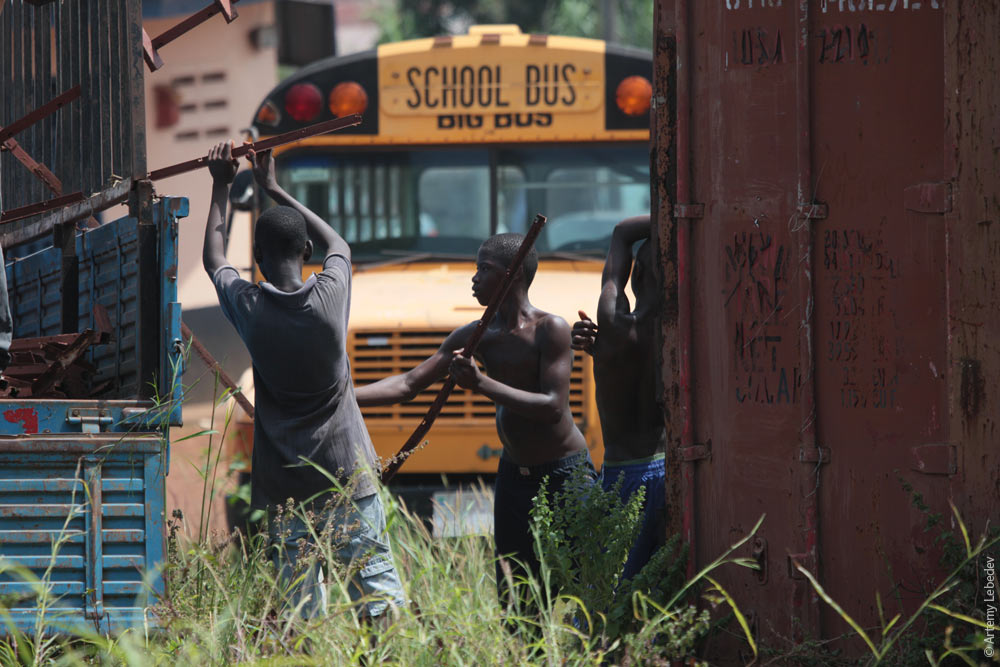 Freetown turned out to be livelier than Monrovia (the capital of Liberia). There are more European-type buildings here. You can see traces of past progress. The prices are more obnoxious. 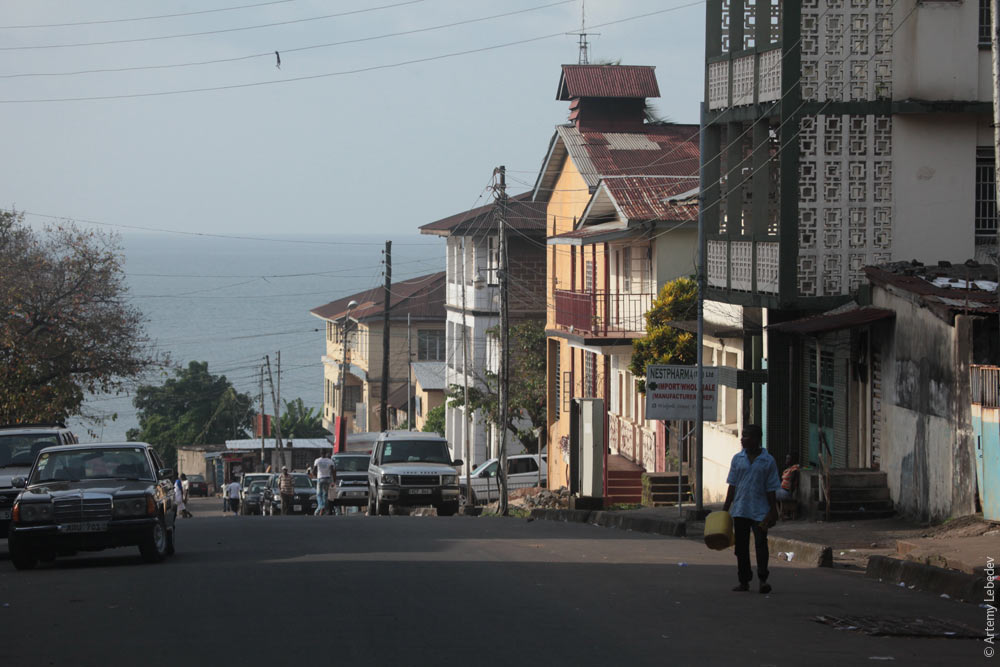 But there are also areas with more local flavor, where just past the slums an endlessly vast trash dump burns and emits foul fumes around the clock. 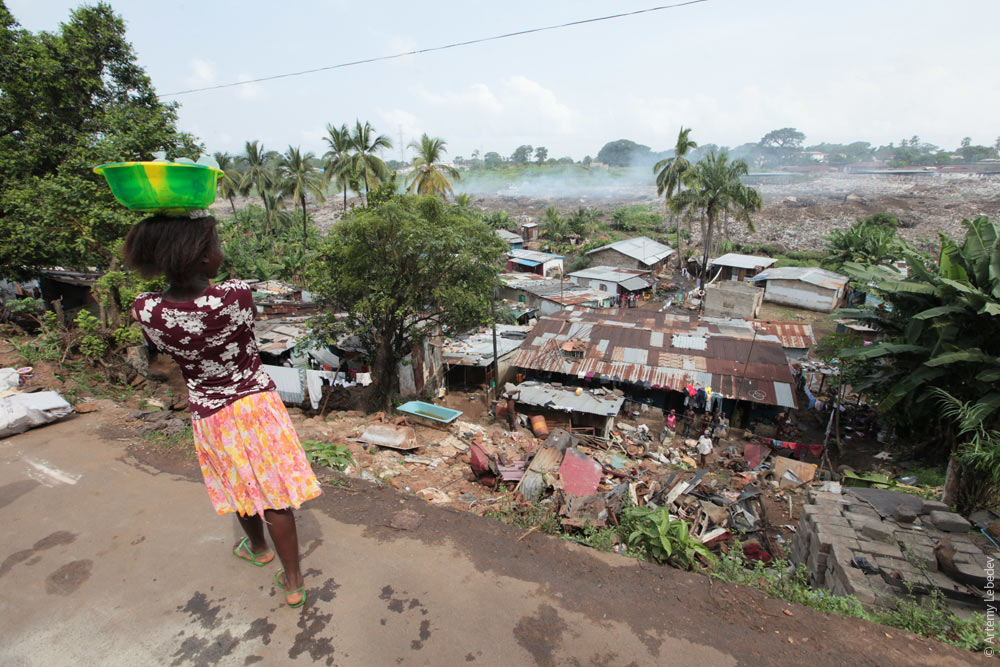 White people all look the same to the locals. It’s nice to personally experience the injustices of chauvinism. “Hey, chink, take my picture!” 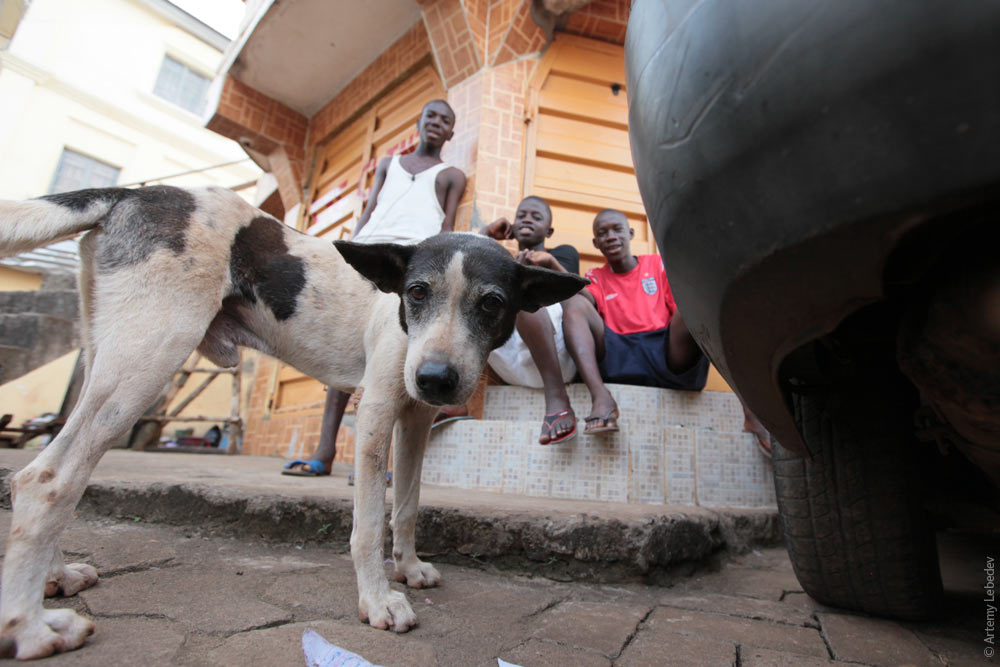 Everyone carries everything on their heads here.  But unlike Liberia, the resulting edifices are taller and more sizable. 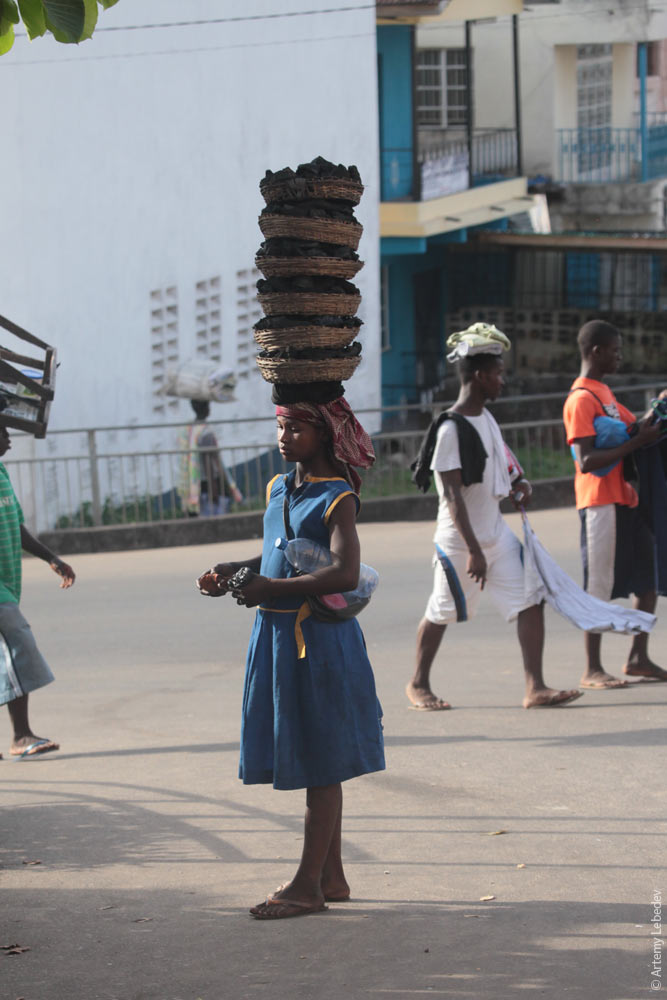 Loaves of bred are carried atop the head on special wooden trays. Also up there on the tray is a jar of mayonnaise, some pâté and other condiments to make the plain bread more palatable. 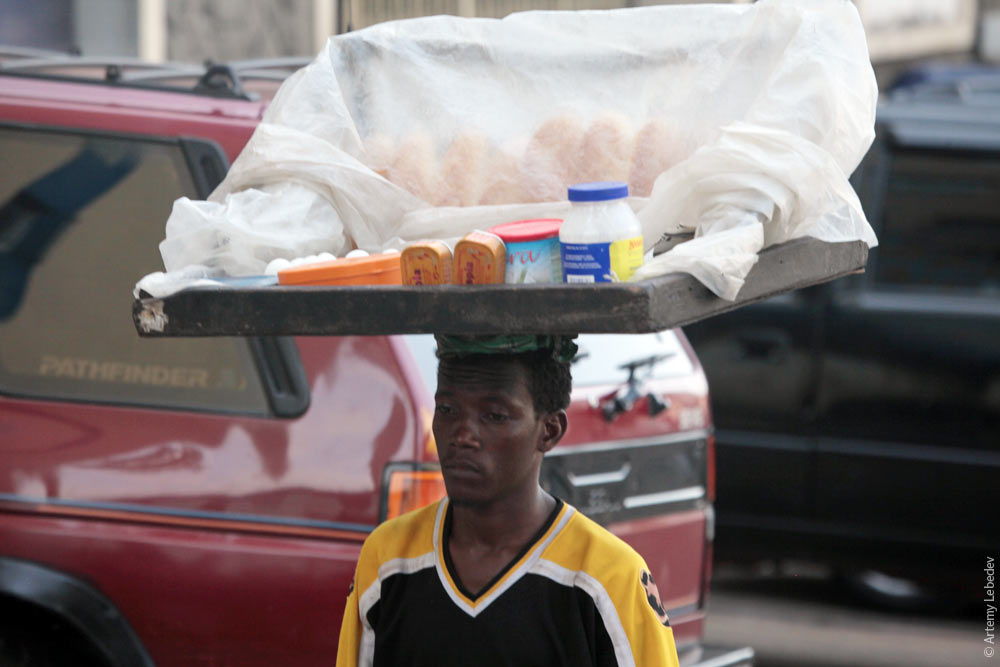 But what if something doesn’t fit on top of your head? That’s what carts are for. There’s a multitude of them in the city. 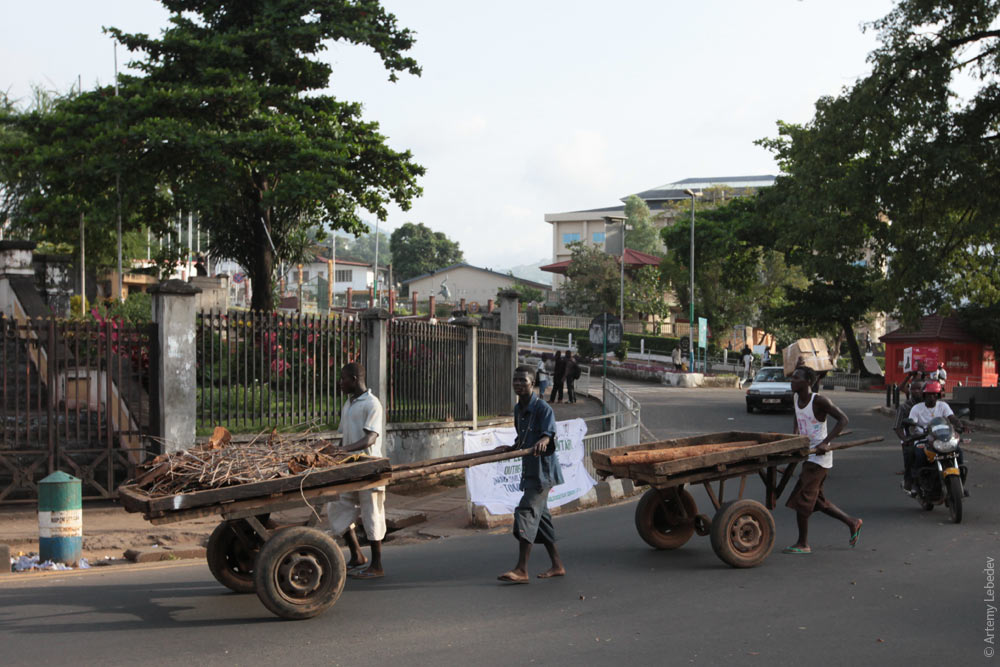 Satellite dishes point straight up at the sky. 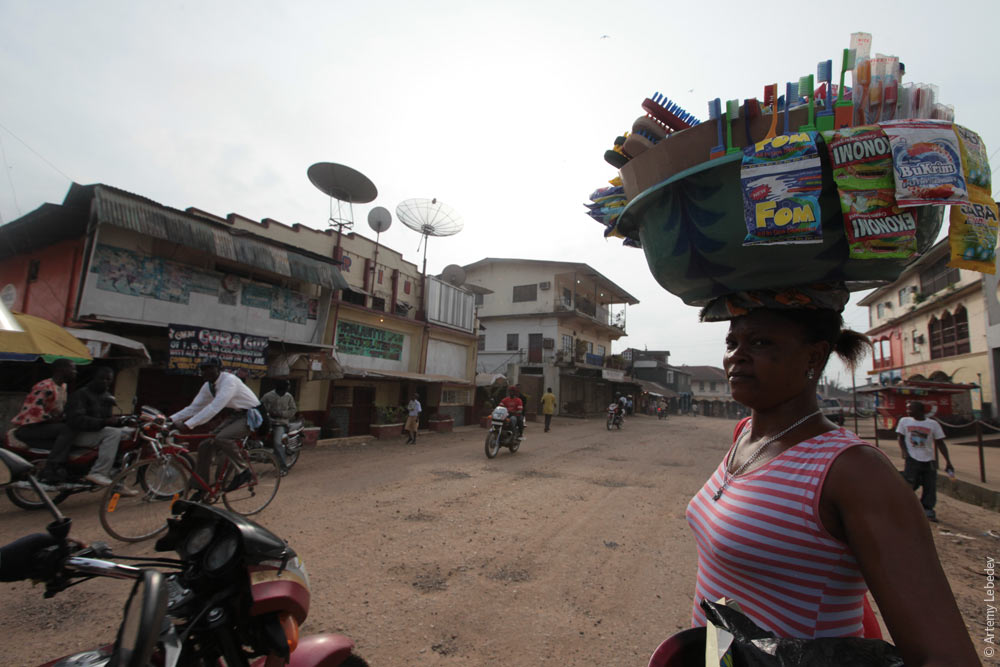 Sculptures are always painted in color. 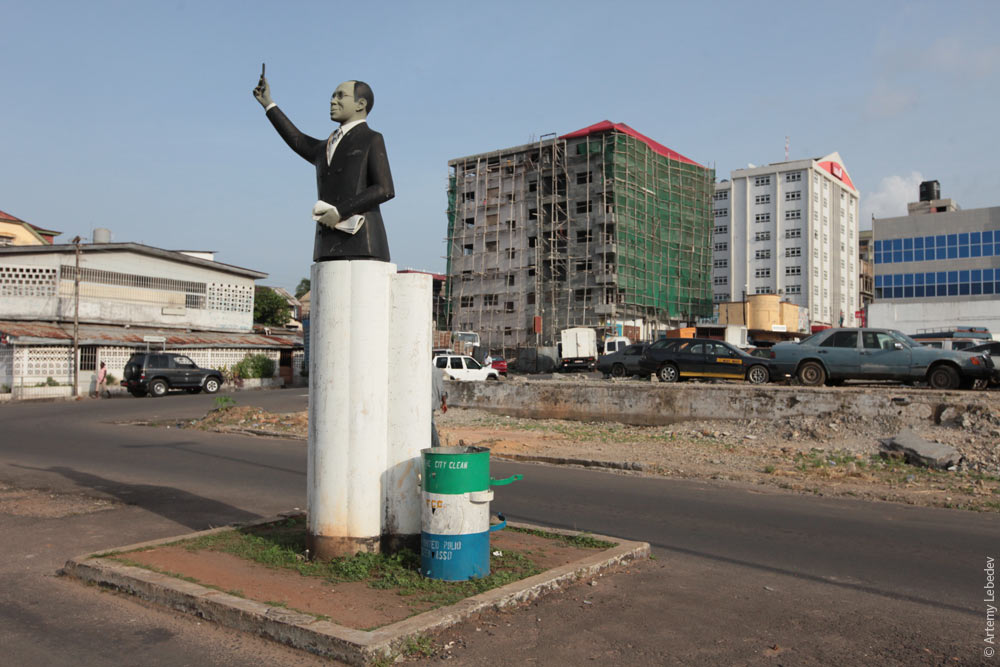 Cold water in little plastic bags is sold everywhere. 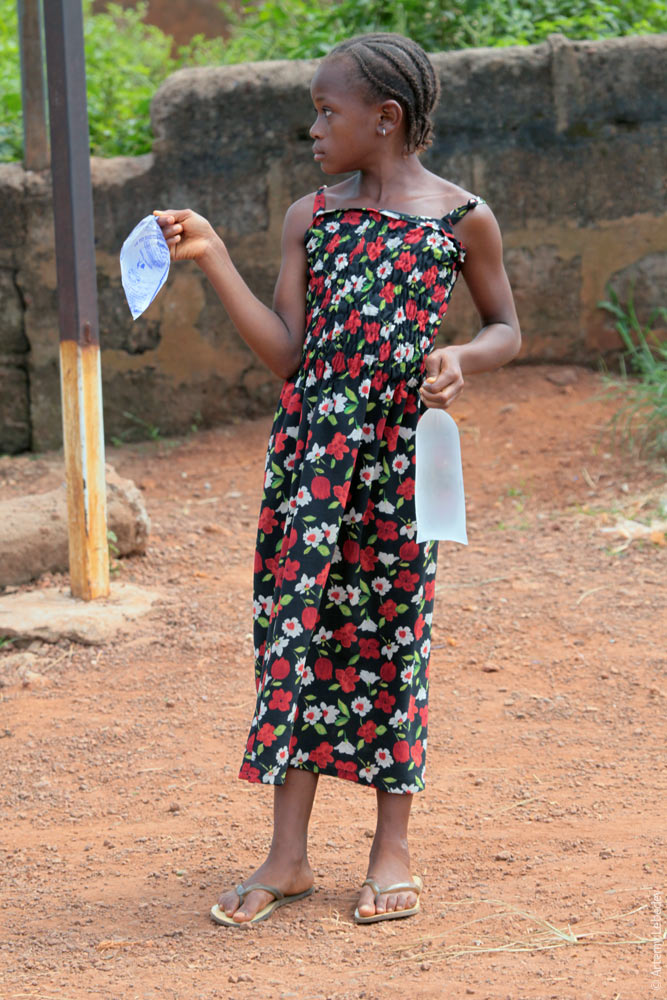 Women have the customary protruding African behind. 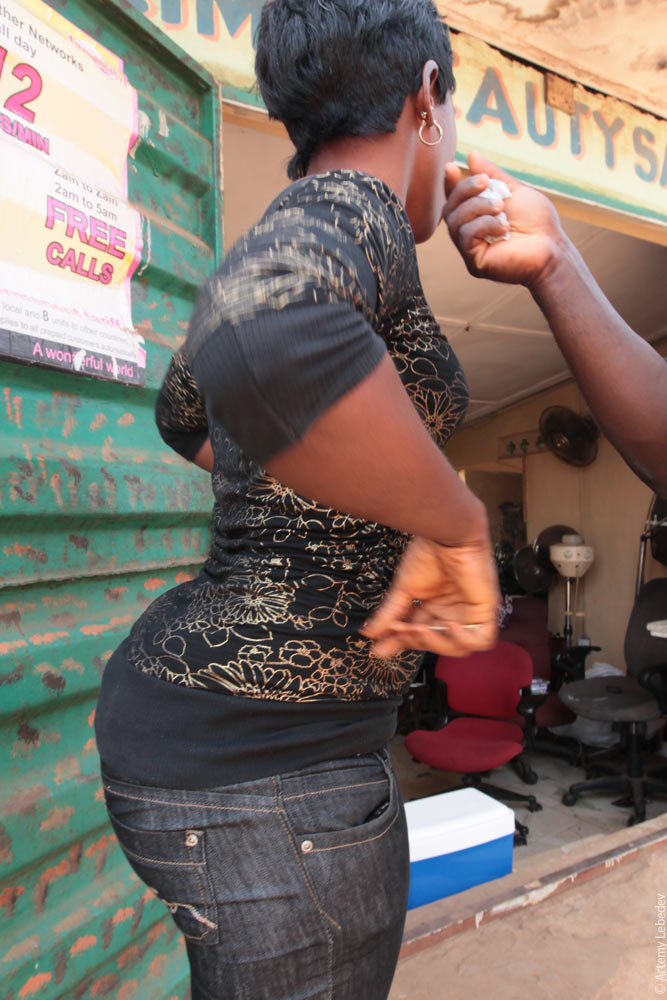 People carry portable radios in the streets. I can’t remember the last time I saw so many portable radios in action. 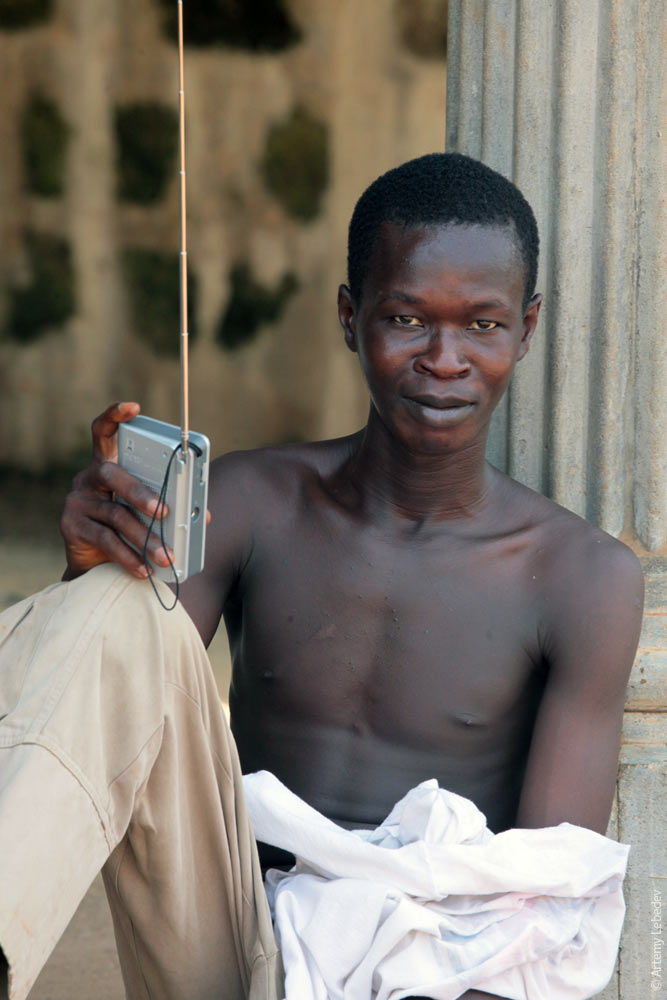 A payphone without a booth. 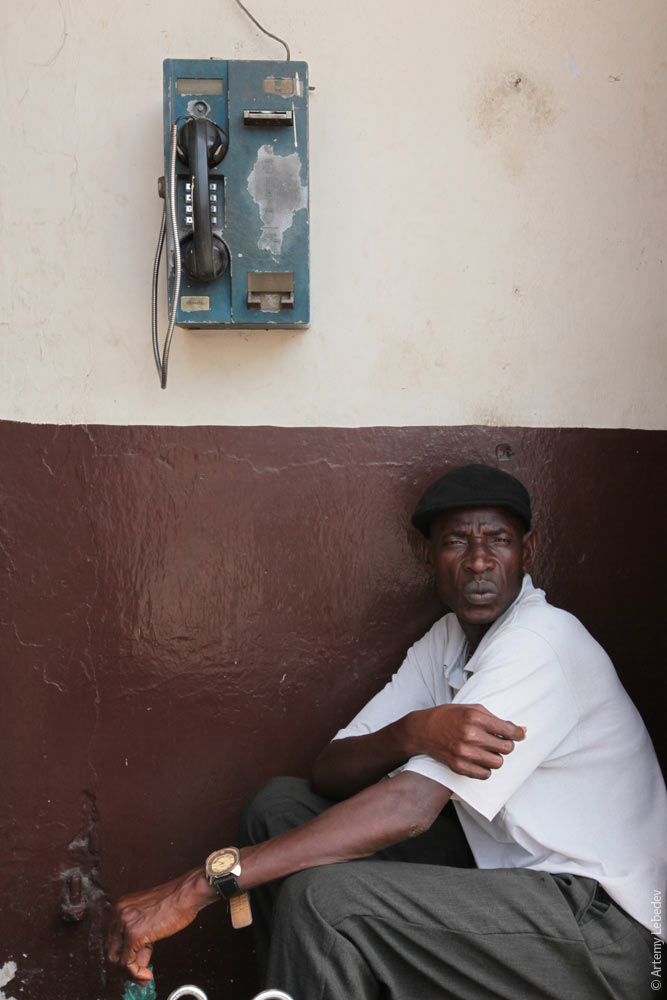 A payphone with a booth. 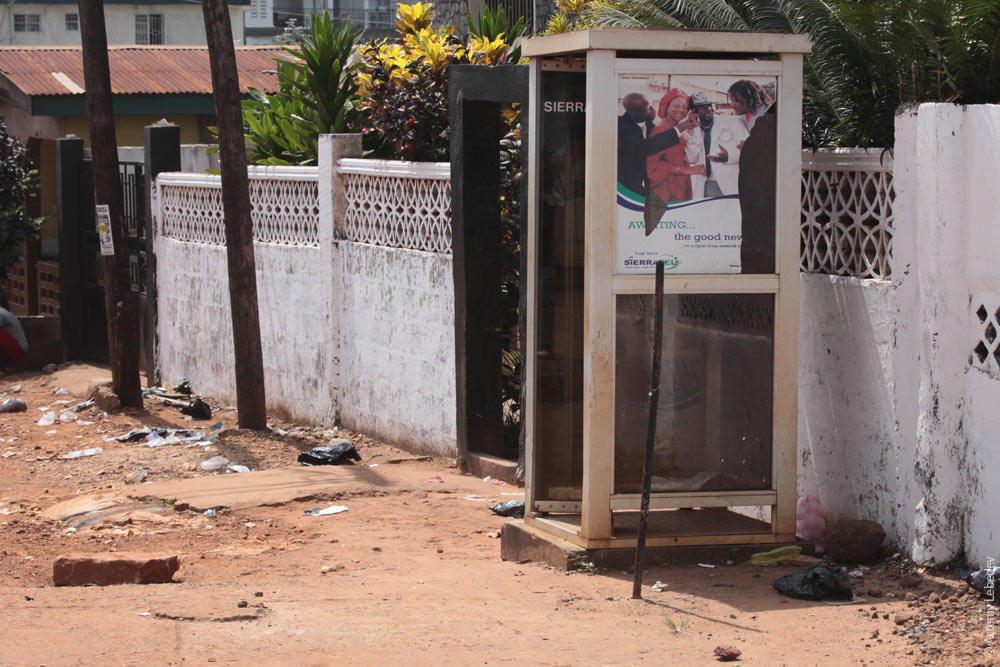 Concrete Doric or Ionic columns are an obligatory decorative element of buildings in Sierra Leone. 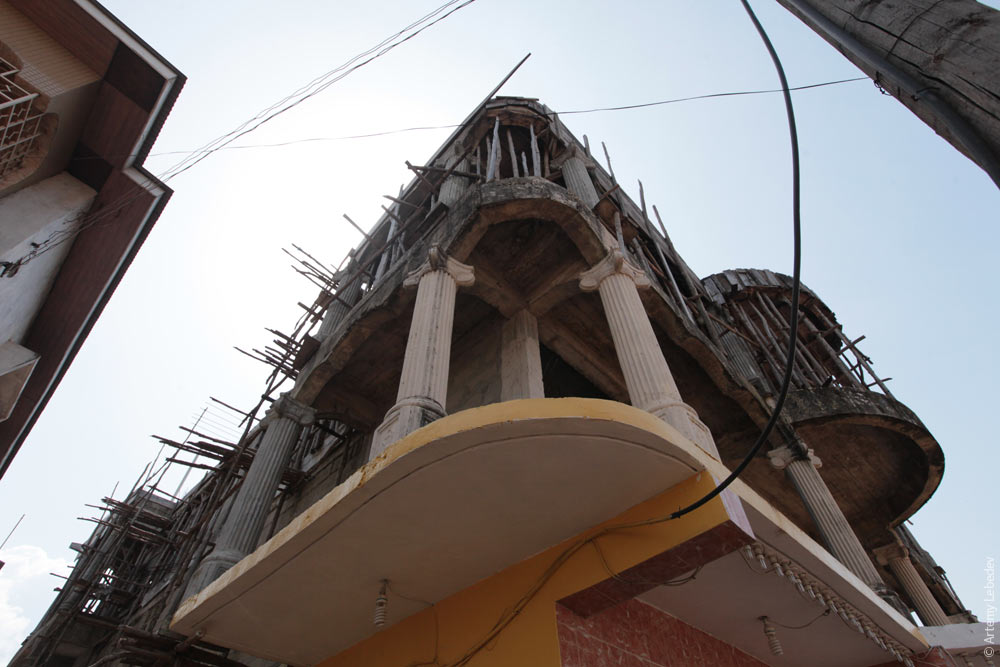 No pissing here. If you piss here, the fine is ten thousand leones. 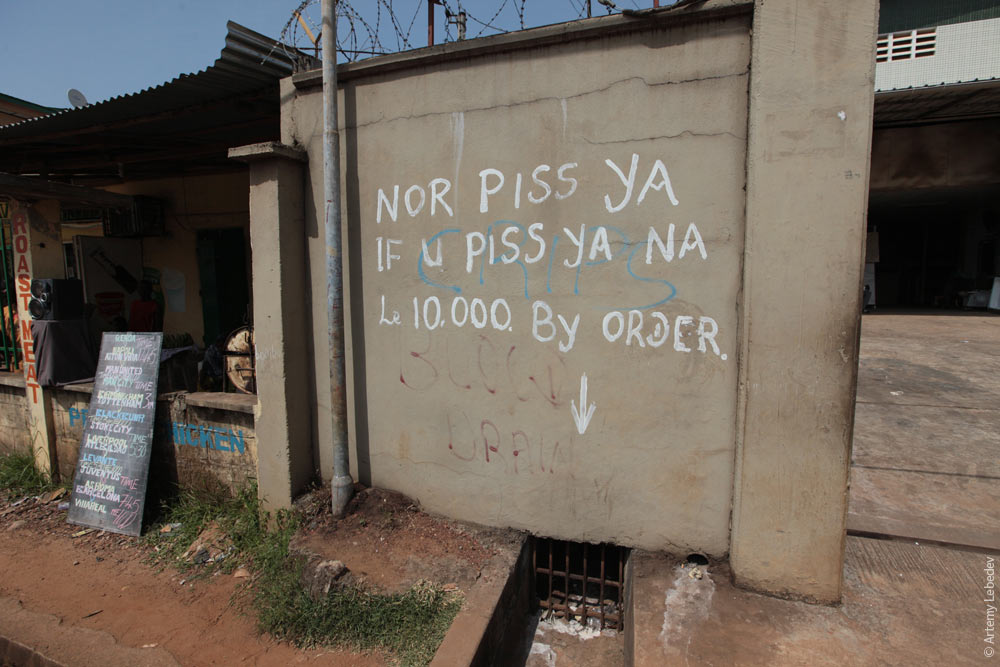 Taxi drivers attach their fire extinguishers to the outside of the car. It’s a great idea: if your car catches fire inside, the last thing you want to do is look for the fire extinguisher—you just want to get out of the car as quickly as possible. 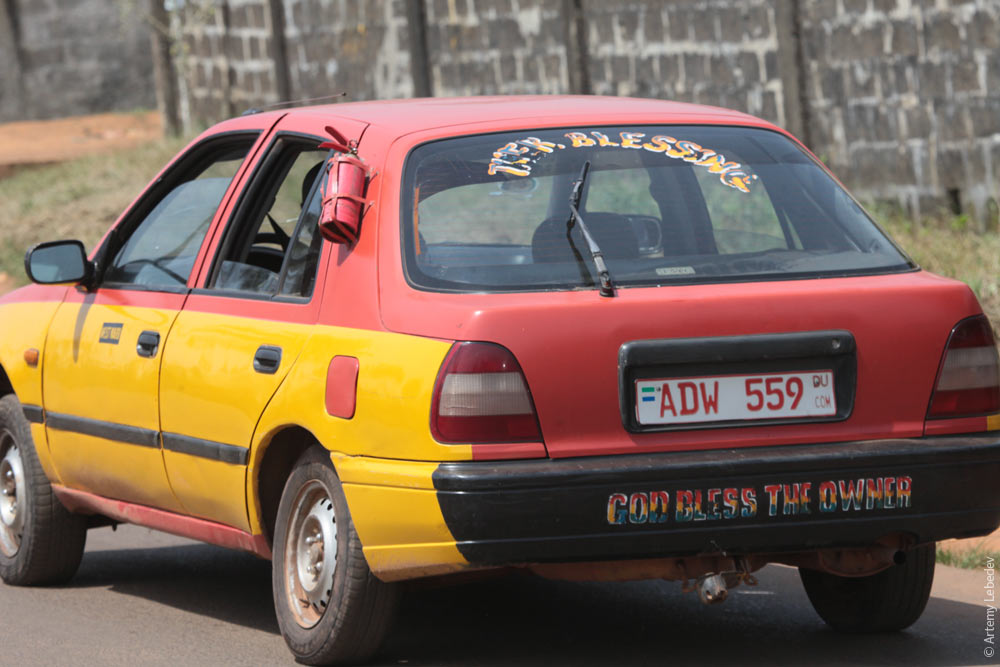 All portable barriers are made of wicker. 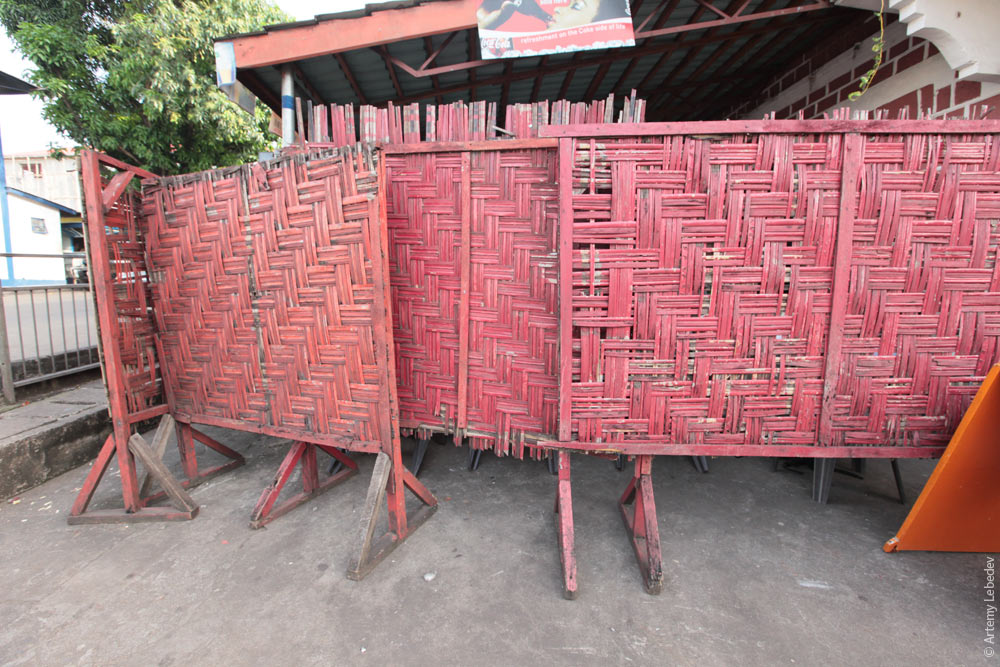 The few non-functioning traffic lights that survived the civil war are riddled with bullet holes. 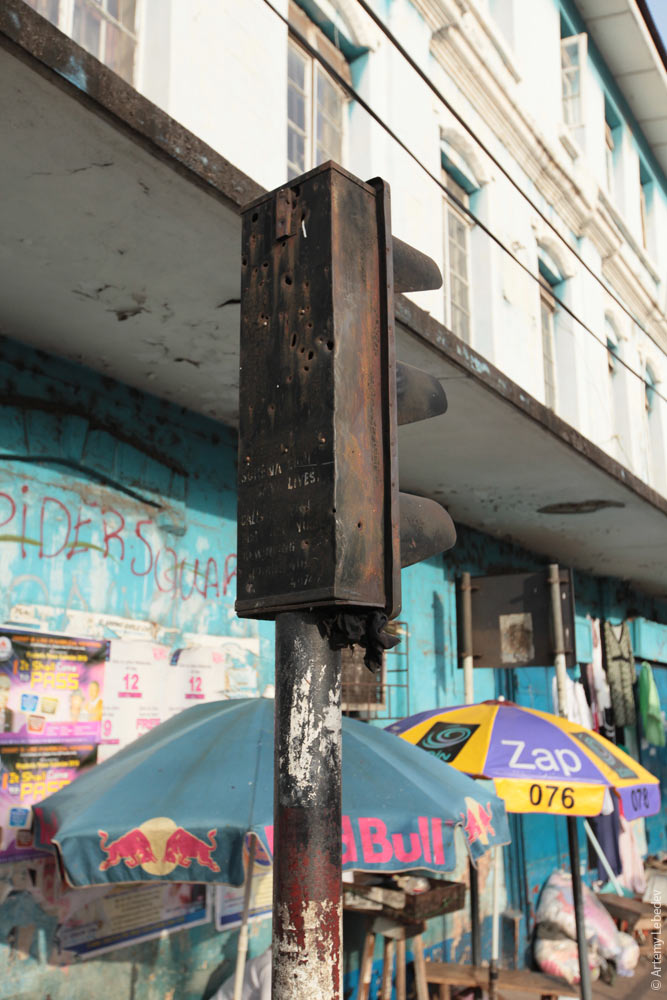 A city trash can. 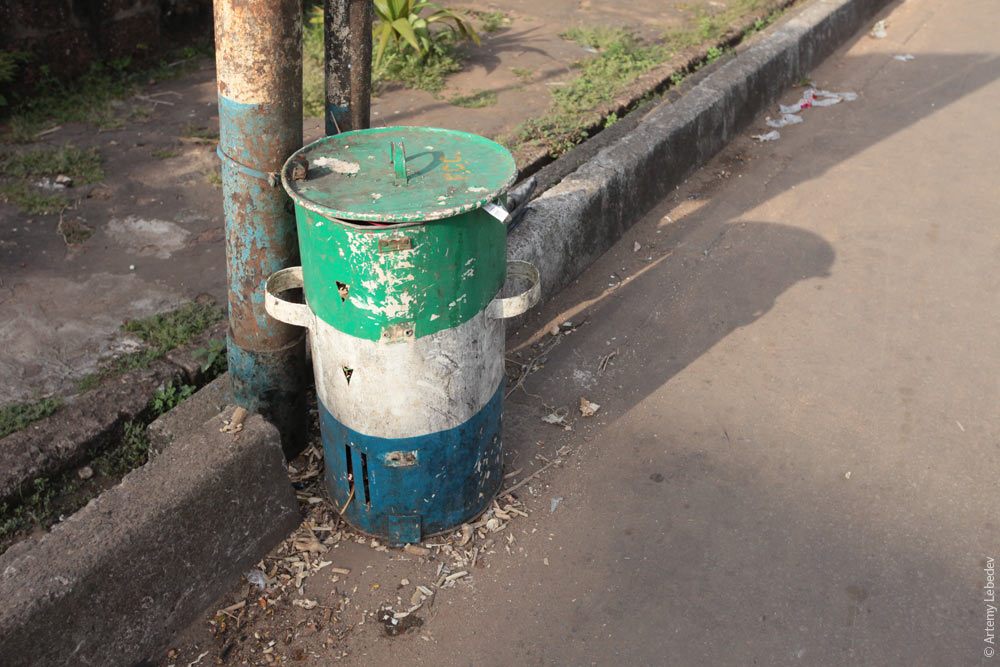 A Nescafé cart. 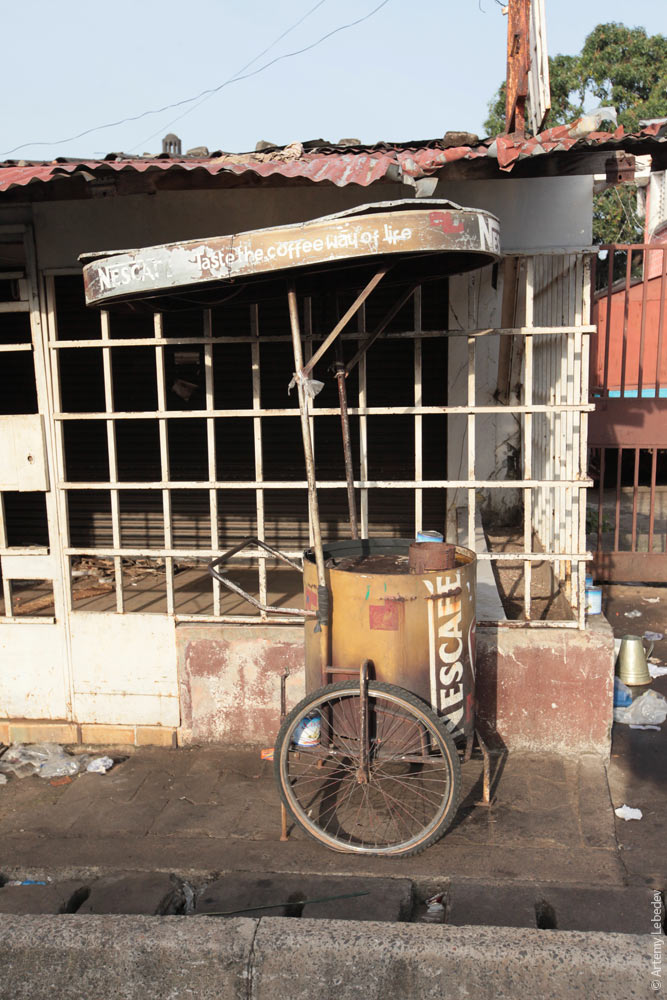 The two existing cellular providers have the same Coca-Cola red brand colors. The only difference is that one’s logo has a white arc curved downwards, and the other has three white arcs curved up. 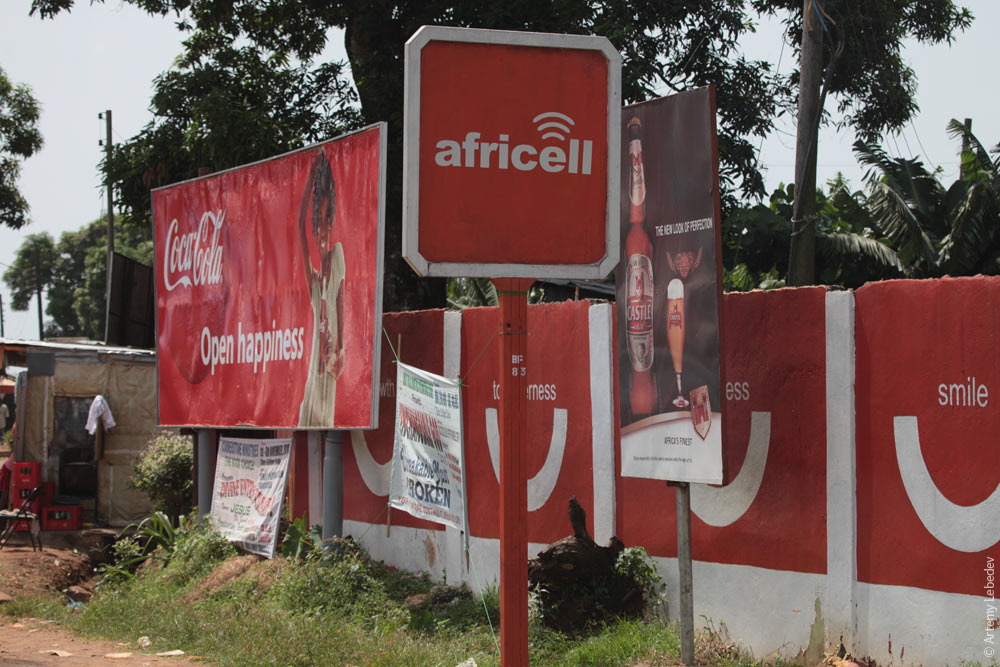 Throughout my childhood, I saw many books with pictures of a hunched-over worker holding a pick. The worker toiled day and night in the depths of some kind of mine or another. In Freetown, people use picks to break trash piles apart into smaller chunks so that the waste can be shoveled onto a tarp and thrown into a garbage truck. 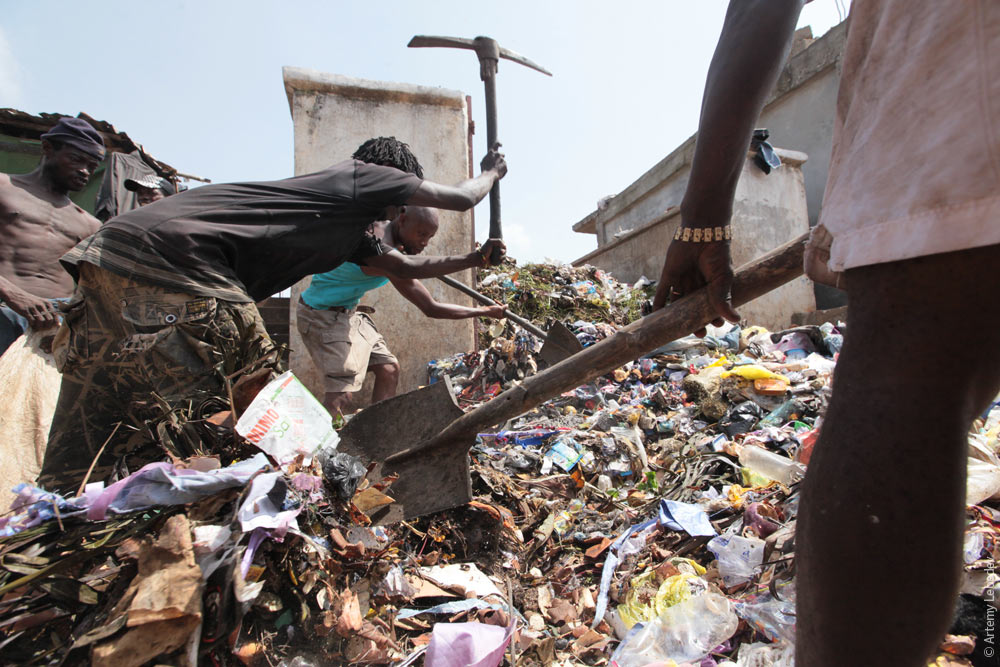 Thanks to a certain degree of economic recovery, people charge whatever prices they think they can get away with. A peeled orange for squeezing into your mouth can be bought on the street for five cents (250 leones) in some places and for six or even eight in others. Or take taxis. One taxi driver at first asked for 160 bucks to drive to Bo, a city approximately 170 kilometers away. I found another driver who was willing to do it for 20. A billboard urges to fight corruption and wipe out poverty. 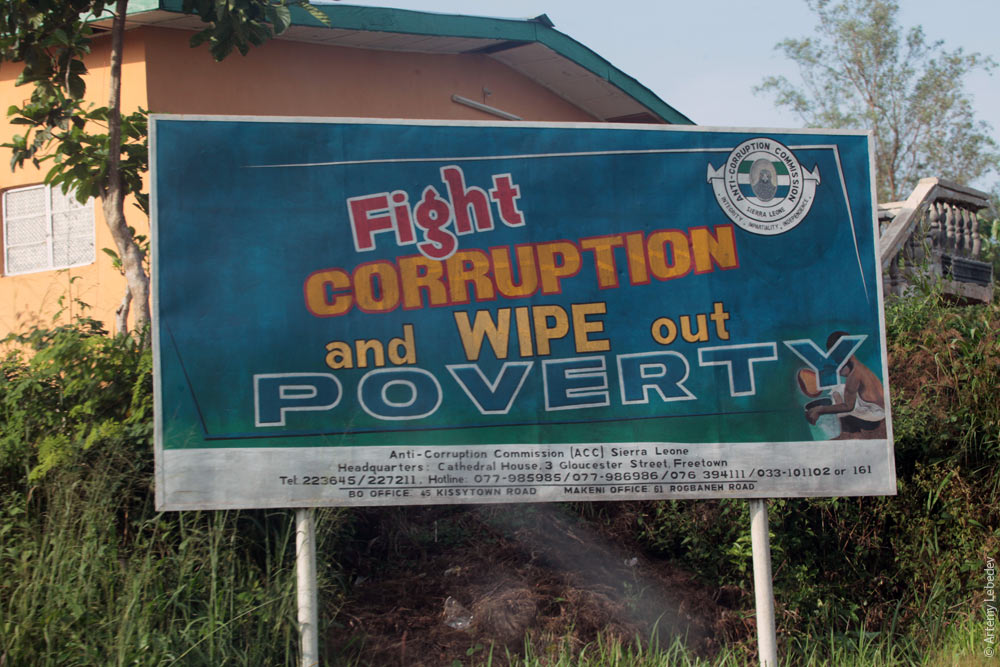 Another billboard informs you that rape is punishable in Sierra Leone. We see a picture of the rapist, who has already thrown the woman on the floor (notice the loving attention to detail in the panties dangling on one leg) and even managed to unzip his shorts. 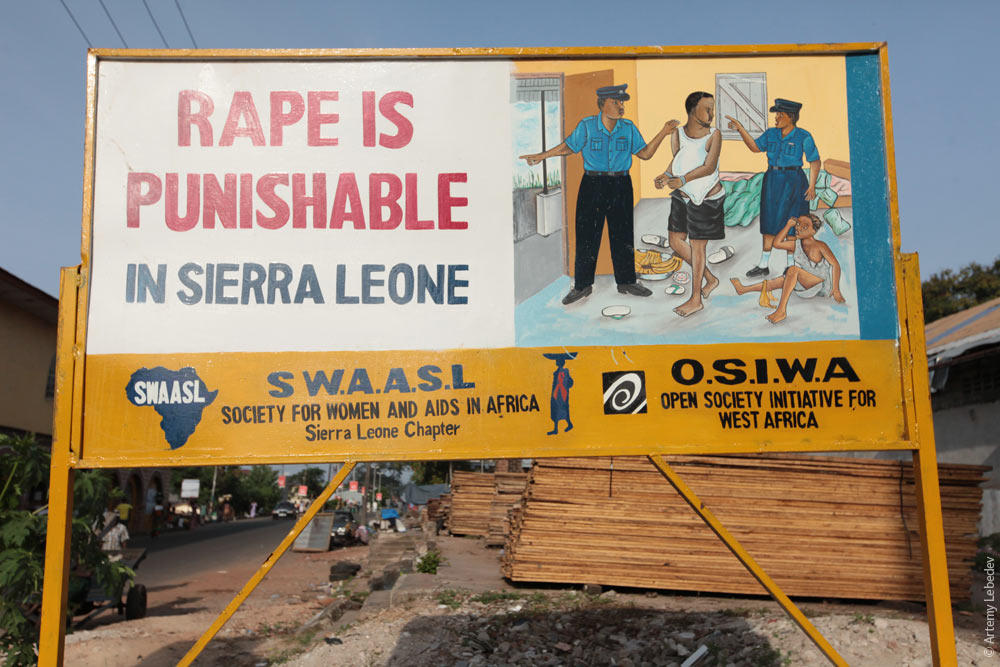 During the civil war, it was very popular to hunt someone down and cut off their arm or leg. A typical African form of entertainment, if you will. As a result, the streets are now full of beggars with various assortments of missing limbs. These disabled victims usually sit around in groups of ten or so. Although, only one of the ten is in fact missing an arm or leg. 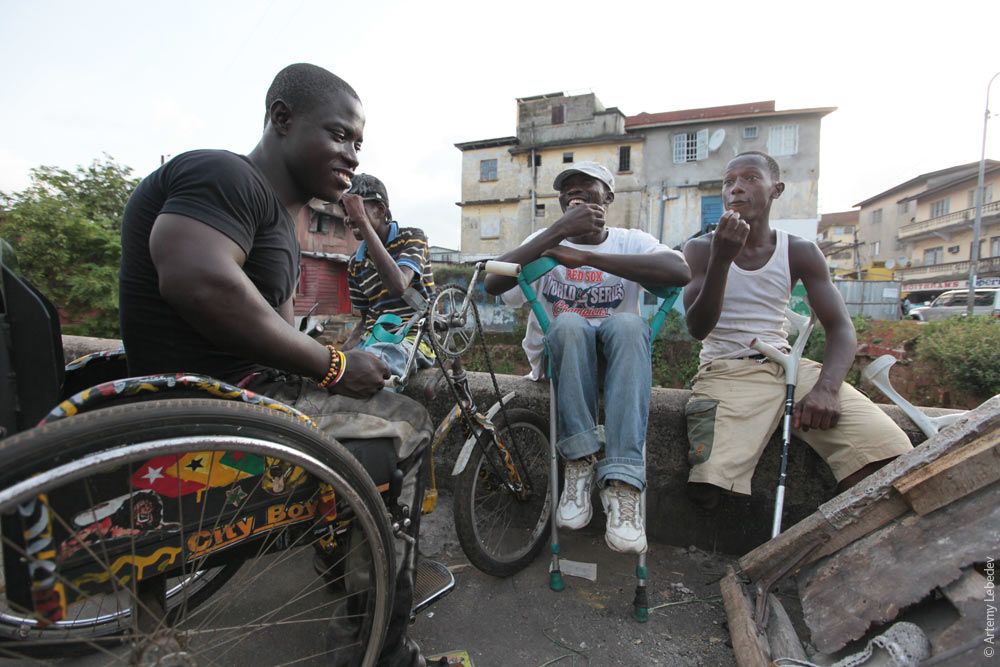 The containers most commonly used to transport water are yellow sunflower oil canisters. Everyone comes to the water pump with these. 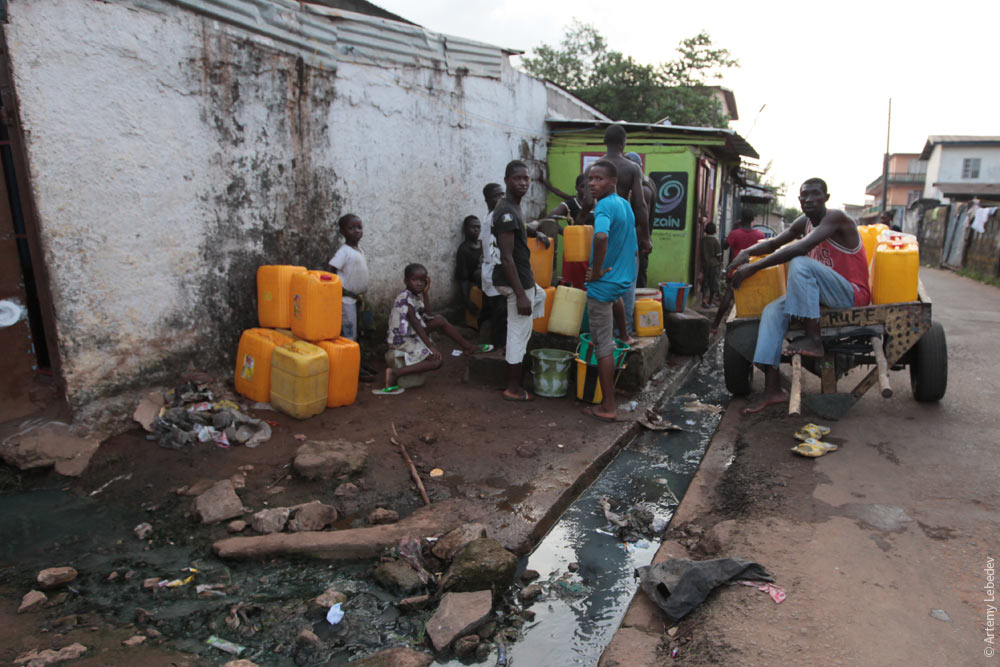 An excellent urban solution: railings with spikes on them to prevent people from sitting. 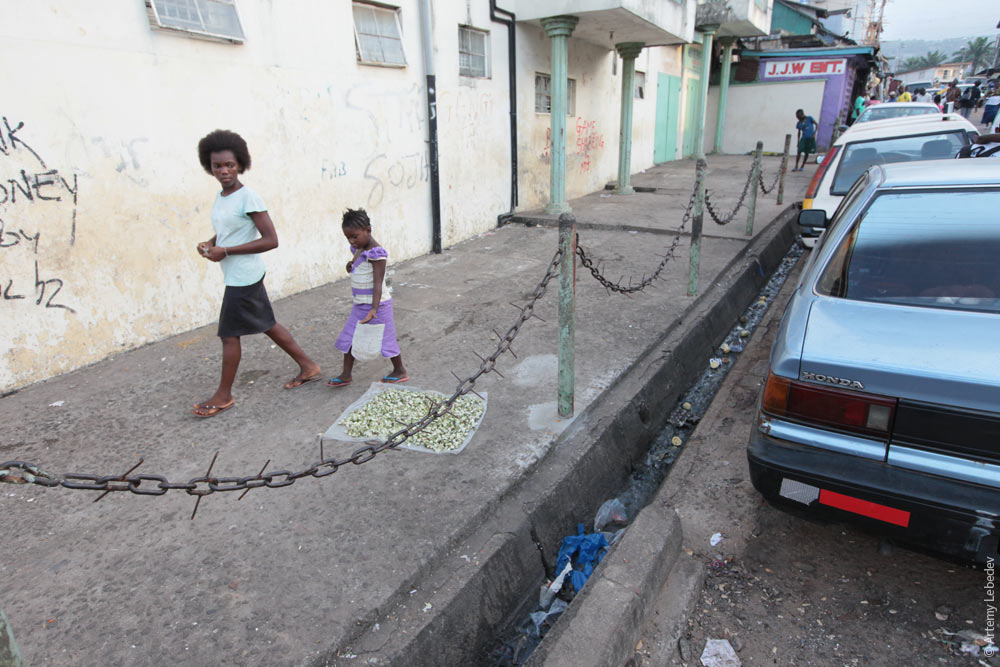 This is where I encountered the most beautiful car rear-view mirror I have ever encountered. 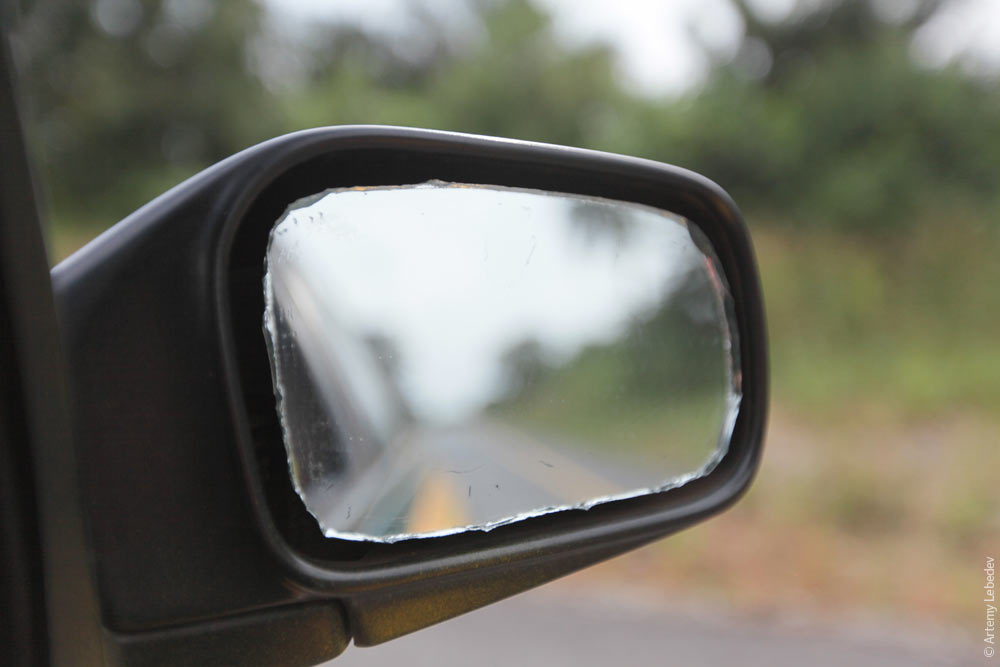 Sierra Leone is a predominantly Muslim country. 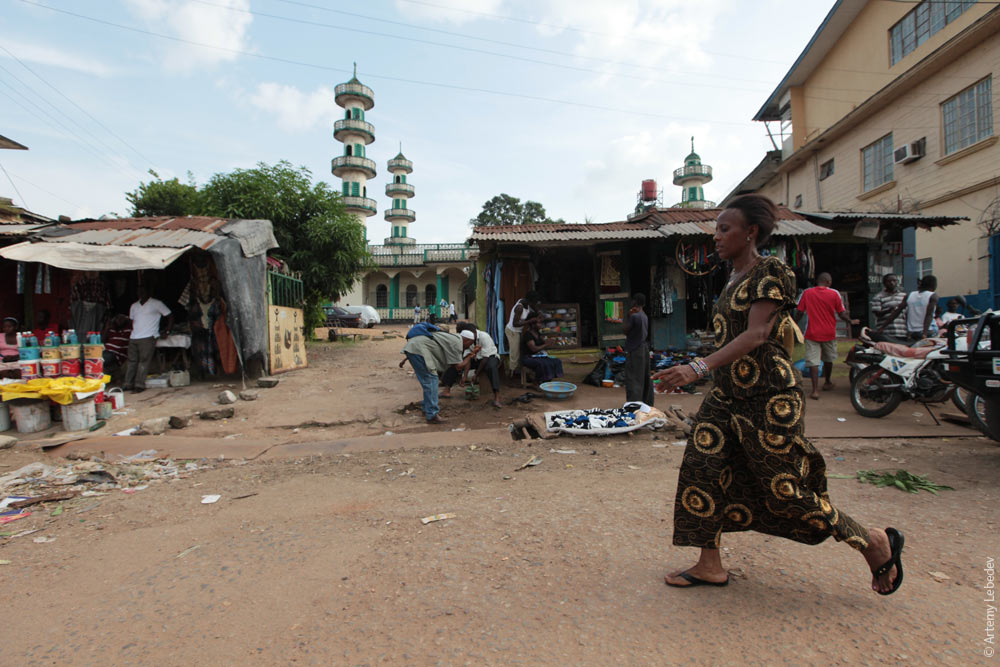 Most of the roads and streets are paved with dirt. 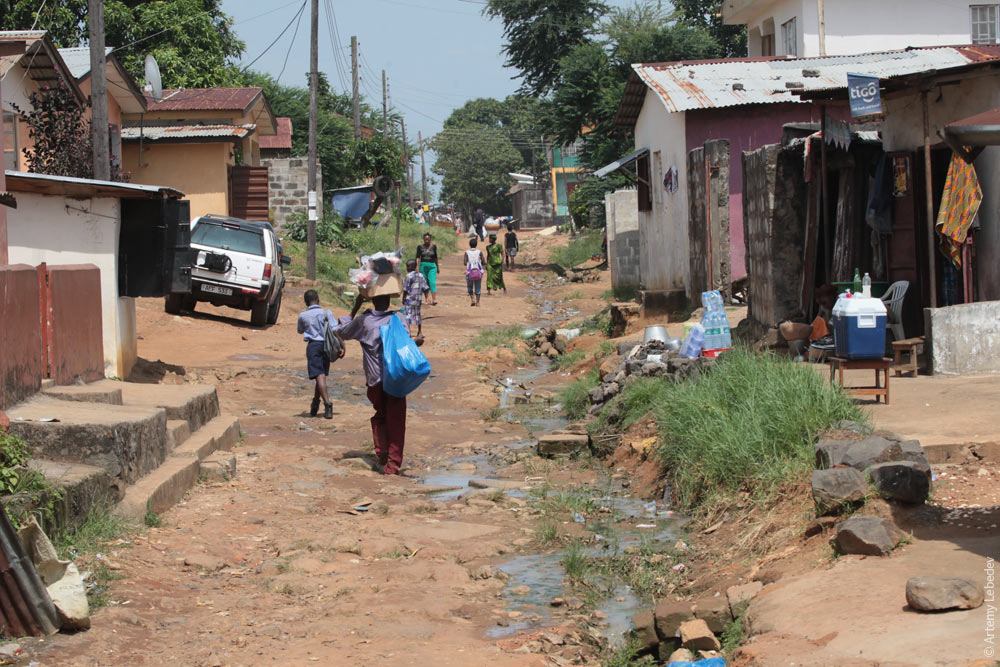 At the same time, there’s a well-paved, perfectly smooth highway that runs across the entire country. It seems it was built by Europeans. 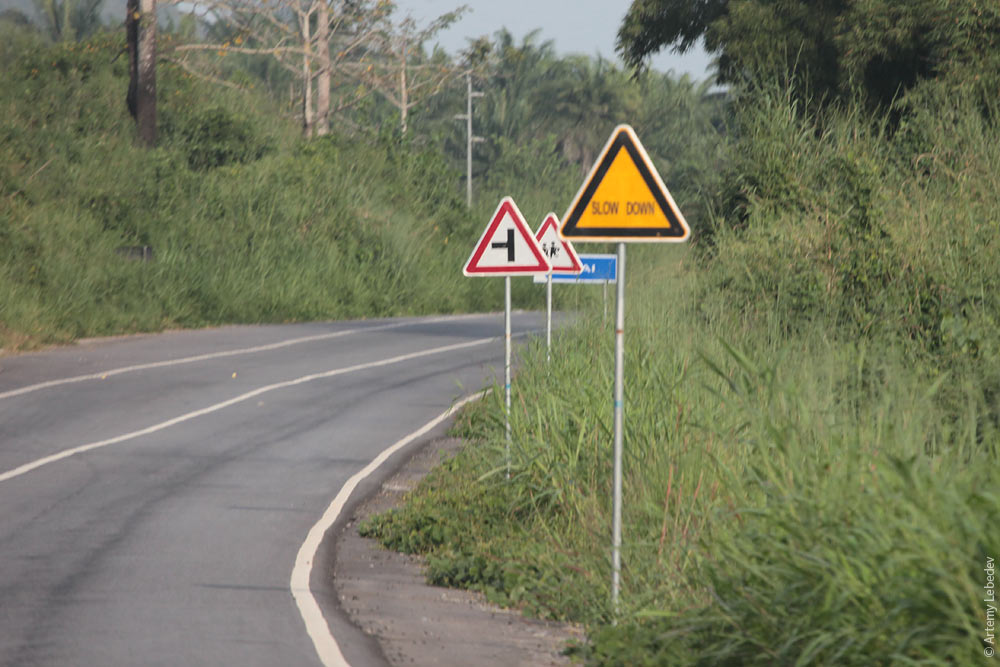 The traffic isn’t very heavy, so the inhabitants of adjacent villages dry rice on the road shoulders and bus parking areas. 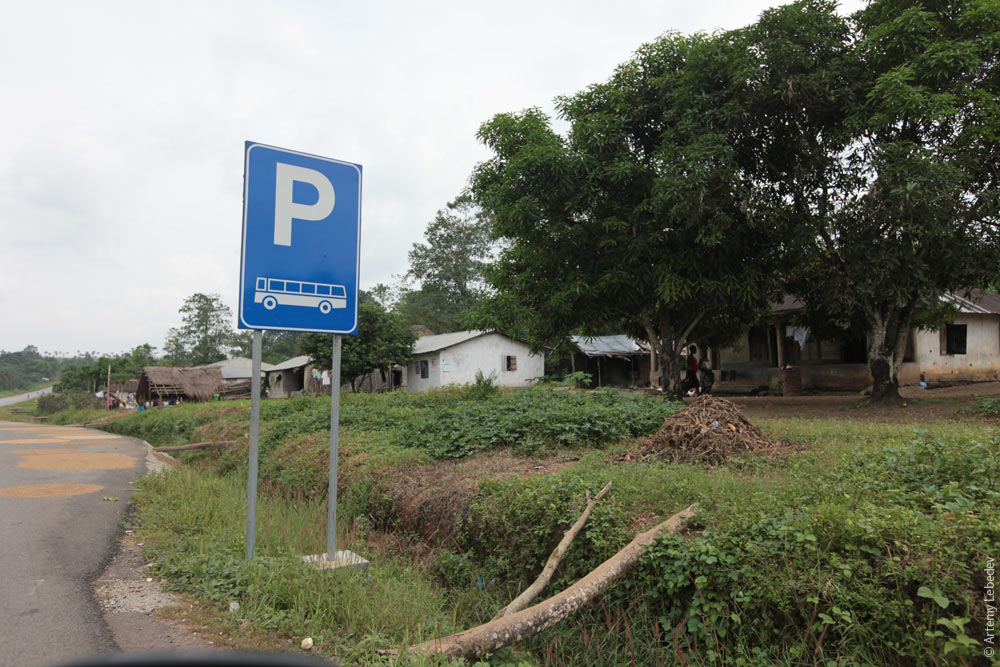 A sharp turn sign with a beautiful arrow. 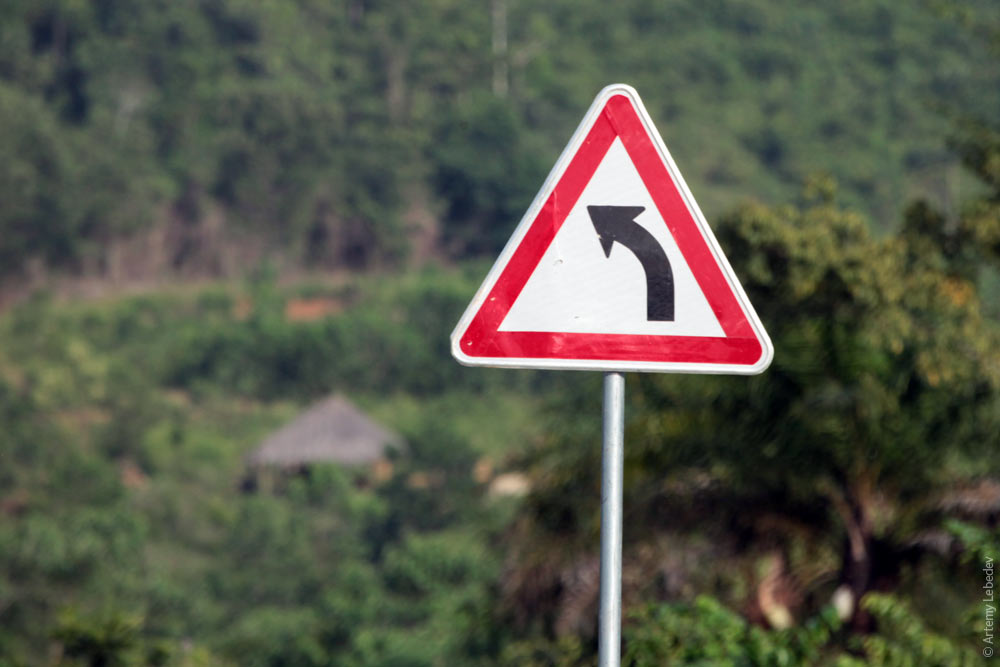 A digger. 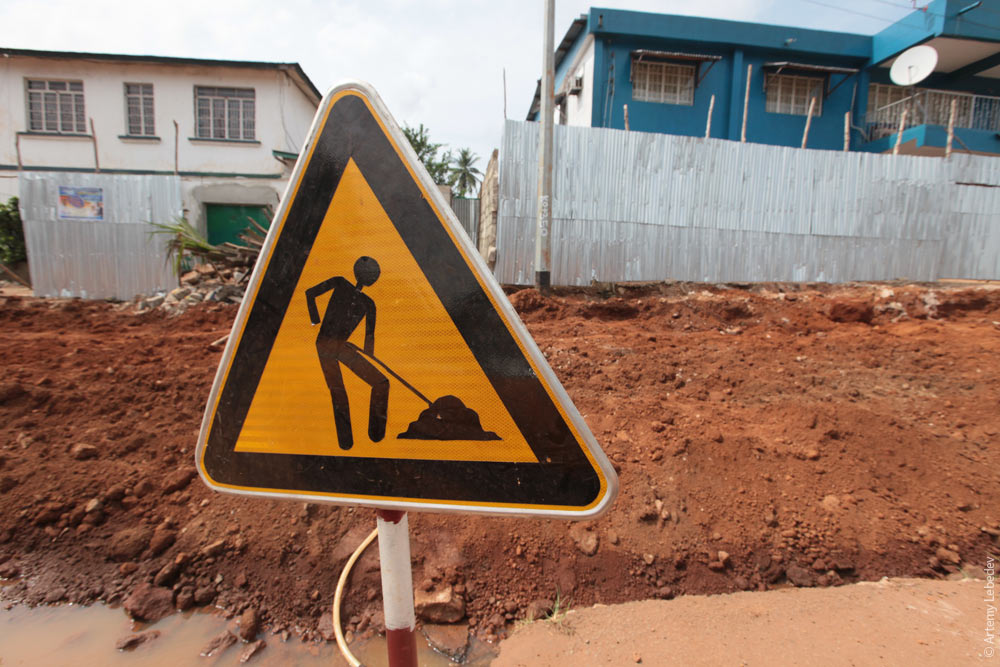 A typical Sierra Leone kiosk. 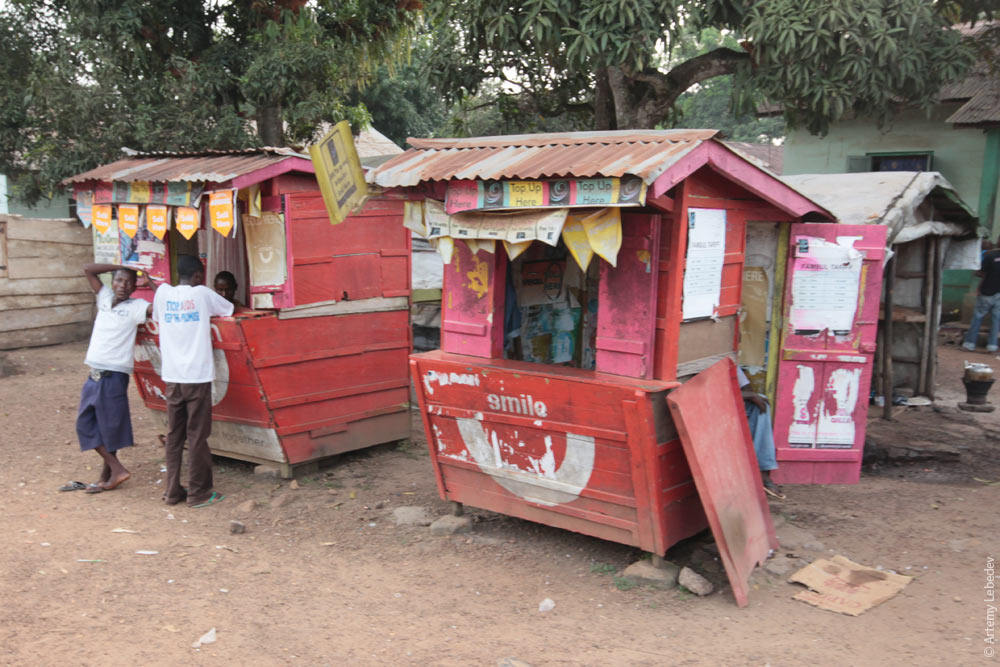 The country’s most prominent commodity is diamonds. 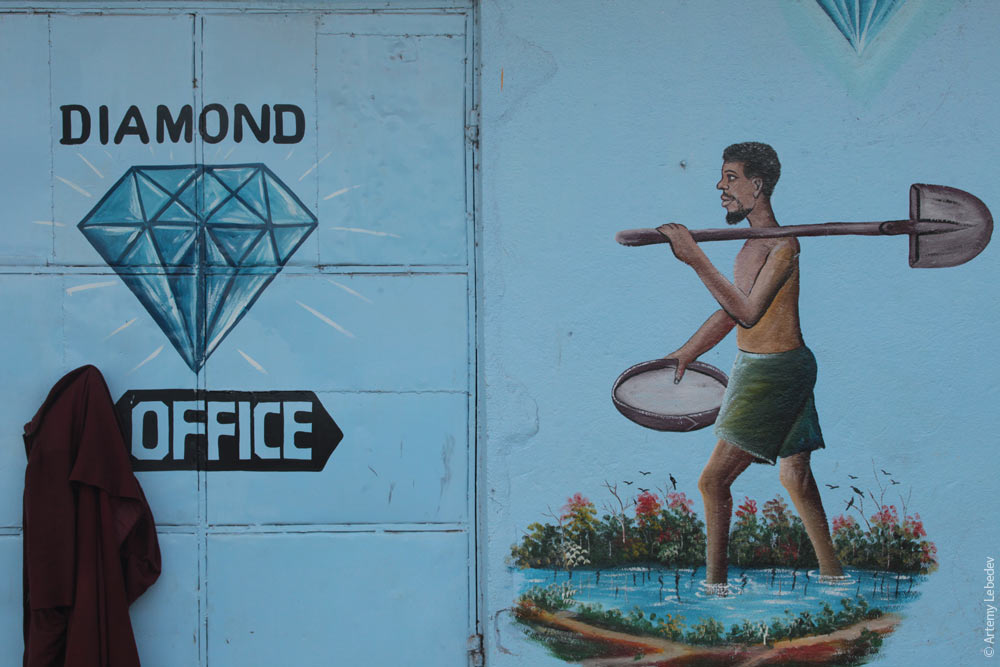 Culture vultures on the roof. 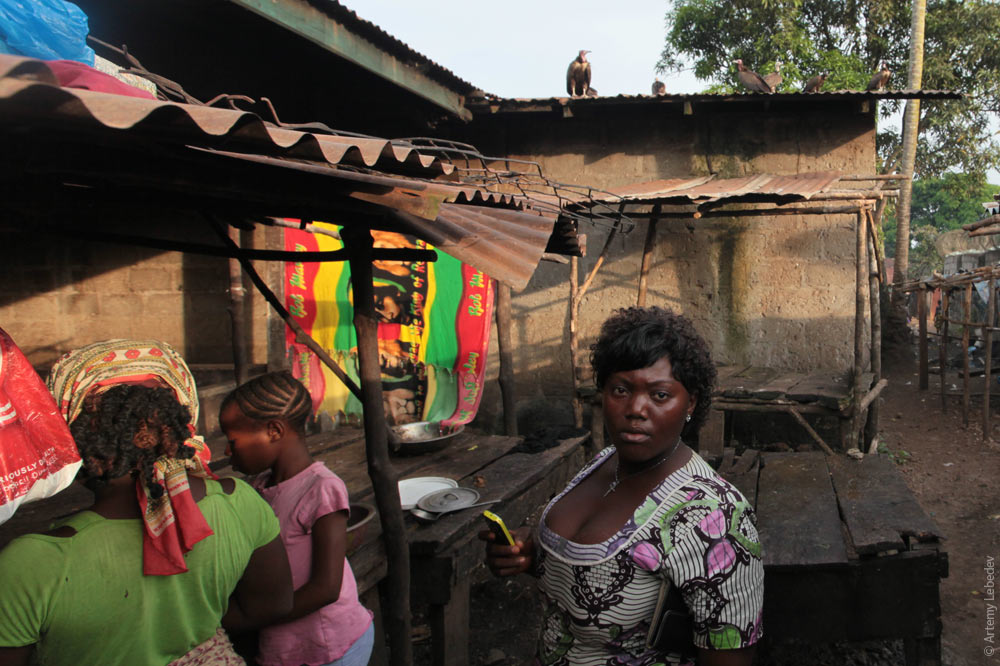 Mothers carry their babies in slings without feeling the need to overanalyze their choice on online discussion forums. 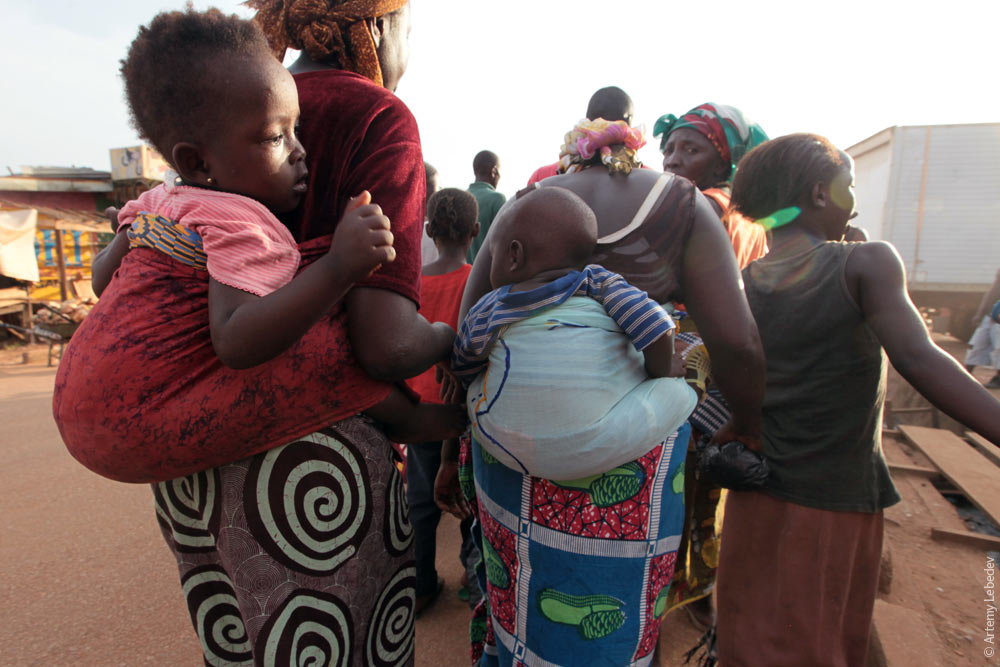 And so our story ends, my friends. 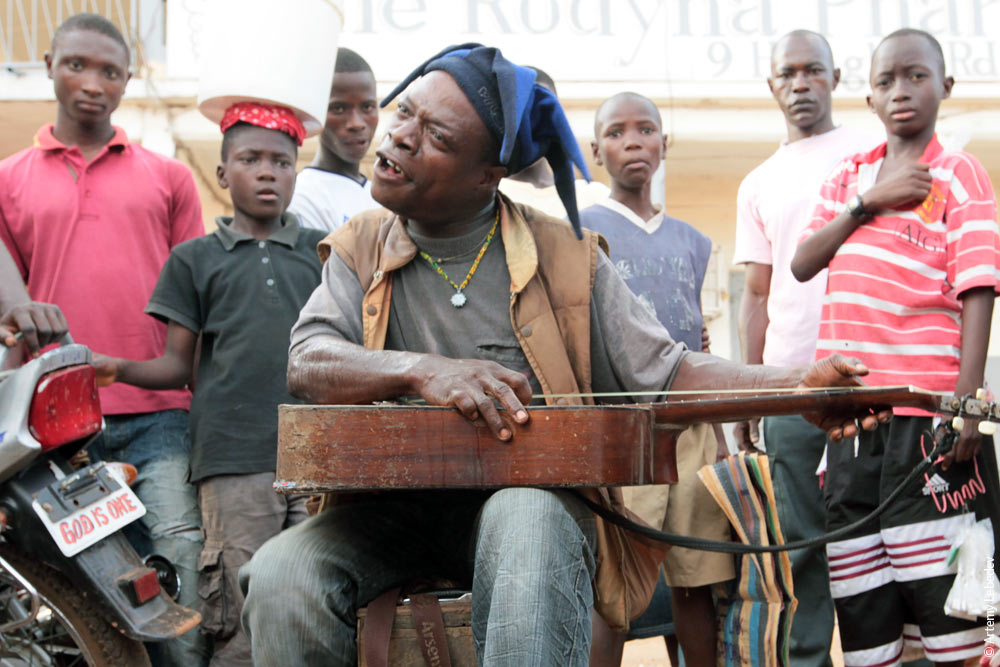 |